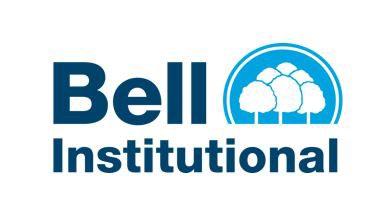

RATIONAL REFLECTIONS
By Bell InstitutionalCommoditizing Your Complements and Today’s AI Landscape
Joel Spolsky, a tech writer and software blogger, was one of the first people to write about the business strategy of commoditizing your complements. In his “Strategy Letter V” post from June 2002 on his blog, Joel on Software, he described this phenomenon as the following:
Every product in the marketplace has substitutes and complements. A substitute is another product you might buy if the first product is too expensive. Chicken is a substitute for beef. If you’re a chicken farmer and the price of beef goes up, the people will want more chicken, and you will sell more.
A complement is a product that you usually buy together with another product. Gas and cars are complements. Computer hardware is a classic complement of computer operating systems. And babysitters are a complement of dinner at fine restaurants. In a small town, when the local five-star restaurant has a two-for-one Valentine’s Day special, the local babysitters double their rates. (Actually, the nine-year-olds get roped into early service.)
All else being equal, demand for a product increases when the prices of its complements decrease.
With this framework in mind, the competitive strategy of attempting to commoditize the complements to a company’s goods or services can lead to capturing more of the overall value chain.
The Benefits of Commoditized Complements
Imagine a game console. The console itself is the core product, but the games you play on it are the complements. If games are expensive and limited, fewer people will buy the console. By making it easier and cheaper for developers to create games (commoditization), the console becomes more attractive to consumers, driving up sales.
A more specific example is that of the most successful product in human history: the iPhone. Apple doesn't manufacture most of the parts for iPhones, but they control the platform (iPhone) and the App Store (complements). By fostering a competitive app developer environment (commoditization),

they ensure a wide variety of affordable apps, making iPhones more attractive. This boosts sales as Apple profits not only on every phone sold but also receives a cut (around 30%) from every app purchase. The commoditization of everything starts with the access to anything. The iPhone provides this access and exemplifies the “There’s an app for that” motto.
When complements become more affordable and easier to develop/access, users have a wider range of options to choose from. This allows them to find something that perfectly fits their needs and preferences. In addition, when a company commoditizes its inputs, the cost of production falls. Here are some examples beyond phone apps, drawing from Ben Thompson's Stratechery blog:
• Google broke down every publication in the world into individual pages; search results didn’t deliver you to the front page of a newspaper or magazine, but rather dropped you onto individual articles.
• Facebook promoted user-generated content to the same level of the hierarchy as articles from professional publications; your feed might have a picture of your niece followed by a link to a deeply-reported investigative report followed by a meme.
• Amazon created the “Everything Store” with practically every item on earth and the capability to deliver it to your doorstep; instead of running errands you could simply check out.
• Netflix transformed “What’s on?” to “What do you want to watch?”. Everything from high-brow movies to budget flicks to prestige TV to reality TV was on equal footing, ready to be streamed whenever and wherever you wanted.
• Sites like Expedia and Booking changed travel from an adventure mediated by a travel agent or long-standing brands to search results organized by price and amenities.
As It Relates to AI and GPUs
Once again from Spolsky’s “Strategy Letter V:”
Debugged code is NOT free, whether proprietary or open source. Even if you don’t pay cash dollars for it, it has opportunity cost, and it has time cost. There is a finite amount of volunteer programming talent available for open-source work, and each open-source project competes with each other opensource project for the same limited programming resource, and only the sexiest projects really have more volunteer developers than they can use. To summarize, I’m not very impressed by people who try to prove wild economic things about free-as-in-beer software, because they’re just getting divideby-zero errors as far as I’m concerned.
Open source is not exempt from the laws of gravity or economics. We saw this with Eazel, ArsDigita, The Company Formerly Known as VA Linux and a lot of other attempts. But something is still going on which very few people in the open-source world really understand: a lot of very large public companies, with responsibilities to maximize shareholder value, are investing a lot of money in supporting open-source software, usually by paying large teams of programmers to work on it. And that’s what the principle of complements explains.

Once again: demand for a product increases when the price of its complements decreases. In general, a company’s strategic interest is going to be to get the price of their complements as low as possible. The lowest theoretically sustainable price would be the “commodity price” the price that arises when you have a bunch of competitors offering indistinguishable goods. So:
Smart companies try to commoditize their products’ complements.
If you can do this, demand for your product will increase and you will be able to charge more and make more.
In today’s market landscape, being GPU¹ constrained is the norm. There is not enough supply to keep up with the demand. By being the leading provider of GPUs (roughly 90-95% market share), NVIDIA gets to decide who gets to buy GPUs and for how much. NVIDIA is not selling GPUs into a free market,² which can be seen when looking at NVIDIA’s margin profile. ChatGPT³ was released in November 2022, and AI (artificial intelligence) became the new buzzword on the street. Not coincidentally, NVIDIA’s margins started to inflect at the same time, and the reasoning is simple: They are the best providers of the most important input for AI. He who owns GPUs is king. However, will supply always be constrained? No. Will NVIDIA continue to be able to charge inflated prices and continue to expand margins? The history of capitalism would say in the long term it is unlikely.
NVIDIA Margin Profile
As of FY 1Q25
The Brutal Beauty of Capitalism
Underneath the surface, there is a bare-knuckles boxing match going on. The real differentiator when it comes to GPUs is the software that ties all of the GPUs together, not the hardware. NVIDIA chips run on its CUDA software, which is world-class. CUDA is a parallel computing platform and programming model designed specifically for general-purpose processing on GPUs. In other words, it allows programmers to leverage the massive computational power of GPUs for tasks beyond just graphics processing. CUDA is proprietary and specifically designed for NVIDIA chips. It cannot be used directly on competitor chips. It is a language spoken only by NVIDIA GPUs.

In order to maintain its first mover advantage and deepen its moat, NVIDIA has provided free advanced software to developers for years to promote further use of its GPUs. The only problem was that this advanced software never really had any great use cases. However, after the rise of large language models (LLMs), use cases are exploding and many companies are rushing to deploy LLMs on top of their proprietary data. With this in mind, NVIDIA recently released NVIDIA Inference Microservices (NIM). From the NVIDIA blog:
NIM is a set of optimized cloud-native microservices designed to shorten time-to-market and simplify deployment of generative AI models anywhere, across cloud, data center, and GPU-accelerated workstations. It expands the developer pool by abstracting away the complexities of AI model development and packaging for production using industry-standard APIs.
Basically, NIM is a pre-built product that contains virtually everything an organization needs to get started with model deployment. It is sort of a turn-key solution. There is only one catch: NIM will only work if you have NVIDIA GPUs in your datacenter. In essence, NVIDIA is trying to increase dependence on its products. They want their customers locked-in.
On the flip side, the hyperscalers⁴ are trying to commoditize NVIDIA by abstracting away its software moat. The hyperscalers (system integrators) want AMD⁵ to succeed in taking a large chunk of the GPU market share. They want to modularize their inputs (GPUs) so they can switch them in and out and have multiple GPU providers in their tech stack. By doing this, the integrators get the margins as opposed to the individual component maker getting the margins. This is what NVIDIA is fighting back against.
In order to modularize their components, the system integrators are leaning heavily into opensource software. AMD’s software is not great. Therefore, Meta, Microsoft and Google have been pouring resources (employee time and efforts) into further developing open-source software such as PyTorch, TensorFlow, Triton, Keras and MXNet that can run AMD (and other) chips more efficiently.
Besides pouring resources into open-source software, the hyperscalers are also going all-in on custom silicon or ASIC (Application Specific Integrated Circuit) chips. Companies such as Broadcom (second largest chip company by revenue behind NVIDIA) and Marvell Technology work with the hyperscalers to do this through co-development and validation/testing of the chips. Broadcom’s stock price has been on a tear so far this year, and the company revealed the addition of a new AI chip customer at a recent investor conference. However, they did not disclose who the customer was (some speculate this to be TikTok parent ByteDance, Amazon or Apple. Meta and Google are current customers).
More and more large companies are signing up to build out custom silicon. The criticality of the business need for GPUs (compute) is clear. Prior to ChatGPT’s emergence and the AI boom, the market for GPUs was not large enough for most of the big players to really care.⁶ Now it is.

Conclusion
In conclusion, the concept of commoditizing complements offers a powerful lens through which to view business strategy. By making surrounding products or services cheaper and easier to obtain, companies can reduce input costs and also significantly boost demand for their core products.
Clayton Christensen’s⁷ theory of disruption posits that an integrated approach wins at the beginning of a new market, because it produces a superior product that customers are willing to purchase. However, as a product category matures, even modular products become “good enough.” Customers may know that the integrated product has superior features or specs, but they aren’t willing to pay more, and thus the low-priced providers, who build a product from parts with prices ground down by competition, come to own the market.⁸
NVIDIA has integrated software and GPUs. In NVIDIA’s ideal world, the world will standardize on their chips, and customers will be locked-in for life. They don’t want to just be a chip maker; they want to be the system provider themselves. The hyperscalers want to undo this and create modularization. They want AI to continue to develop independent of what chip the AI models are running on. The more competition that is created within the tech stack, the more costs are reduced.
Keeping the Feedback Loop Open
It is entirely possible that you disagree with a variety of the assumptions in this article. Rather than dismiss alternative analyses as wrong, we are better served by keeping our feedback loop open. If you would like to share your opinion and/or critique ours, please feel free to share your thoughts. One of the great aspects of investing is that if you get something wrong, you always have the opportunity to change it. Refusing to change a narrative, just because it is yours, is nothing more than hubris.
 Jordan Bancroft, CFA, CAIA VP/Portfolio Manager
Jordan Bancroft, CFA, CAIA VP/Portfolio Manager

jbancroft@bell.bank

End Notes
¹Graphic Processing Unit. A GPU is a specialized chip designed to accelerate tasks that involve numerous calculations, or parallel processing.
²For a breakdown of NVIDIA GPU costs, refer to the Rational Reflections post from March 2024 on page 4.
³ChatGPT is a large language model chatbot developed by OpenAI
⁴Cloud computing service providers that offer massive and scalable infrastructure for businesses. These include Amazon Web Services (AWS), Microsoft Azure, and Google Cloud Platform (GCP).
⁵Advanced Micro Devices, Inc.
⁶Companies such as Google (TPUs – Tensor Processing Units), Meta (MTIA – Meta Training and Inference Accelerator), and Amazon (AWS Trainium) had already developed their own ASIC chips. However, more sincere focus is now being placed on ASIC chip development.
⁷Clayton Christensen (1952-2020) was an American academic and business consultant who is widely considered one of the most influential thinkers in business strategy. He is best known for developing the theory of disruptive innovation.
⁸https://stratechery.com/2013/clayton-christensen-got-wrong/
Disclosures
This communication reflects the personal opinions, viewpoints and analyses of the Bell Institutional Investment Management (BIIM) employees providing such comments and should not be regarded as a description of advisory services provided by BIIM or performance returns of any BIIM client.
The views reflected are subject to change at any time without notice. Nothing in this communication constitutes investment advice, performance data or any recommendation that any particular security, portfolio of securities, transaction or investment strategy is suitable for any specific person.
Any mention of a particular security and related performance data is not a recommendation to buy or sell that security. BIIM manages its clients’ accounts using a variety of investment techniques and strategies, which are not necessarily discussed in the commentary. Investments in securities involve the risk of loss. Past performance is no guarantee of future results.
Investing and wealth management products are: Not FDIC Insured | No Bank Guarantee | May Lose Value | Not A Deposit | Not Insured by Any Federal Government Agency

